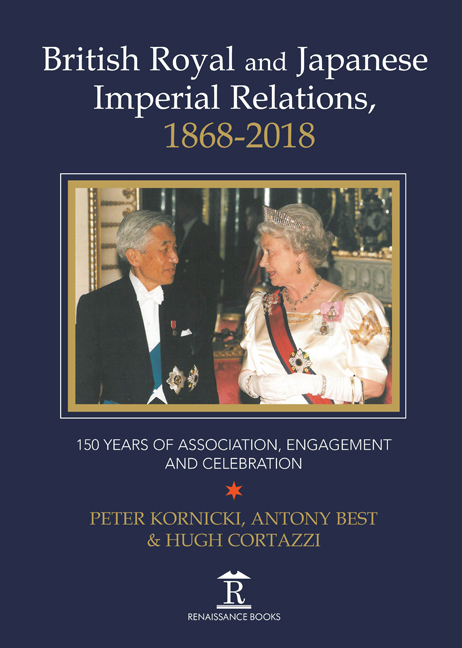 British Royal and Japanese Imperial Relations, 1868-2018
British Royal and Japanese Imperial Relations, 1868-2018 Foreword
Published online by Cambridge University Press: 30 April 2022
Summary
THE POLITICAL AND economic links between Bntain and Japan since the Meiji Restoration of 1868 have stimulated much histoneal analysis. This is the first collection of essays focusing specifically on the connections between the British royal and Japanese impenal families. It illuminates how the two countnes’ status as hereditary monarchies has been reflected in the ebb and flow of their bilateral relationship.
As Professor Peter Komicki explains in his essay on the period from the accession of Emperor Meiji in 1868 to the Anglo-Japanese alliance in 1902, at the time of their first encounter the two countnes had profoundly different conceptions of monarchy. Britain was ruled by a queen who had succeeded to the throne in her own nght and presided over an empire (indeed, was to assume the title of Empress of India in 1876). Japan was mied by an emperor who claimed to have a (virtually) unbroken line of descent through the male line; and while his predecessors had reigned in quasi-hermitic seclusion for centuries, the restoration of the institution under Emperor Meiji represented a new, outward-looking Japan about to convert itself from a feudal society to a world industrial power.
Bntain and the other great powers had already forced the Japanese to open up to trade. But when, in his first contacts with the emperor, Sir Harry Parkes treated the Japanese Court by the standards of the Treaty of Vienna of 1815 (which regarded all states as equal irrespective of style of government), he effectively forced a new form of diplomatic contact and protocol on the nascent Japanese government, and paved the way for the emperor's public role to evolve over the coming years and resemble that of European monarchies. In due course, royal visits ensued, playing an important role in helping both to normalise the relationship with Japan as it entered the community of nations, and beginning to promote closer links with Britain (though other Powers quickly followed suit); and members of the imperial family visited Britain, initially more for study than ceremony. But relations between the two families and households were not close. And protocol was always fraught, not least because of the British reluctance to honour the emperor with the Knighthood of the Garter, which the queen had bestowed on other foreign heads of state, but was deemed inappropriate for an Eastern monarch.
- Type
- Chapter
- Information
- British Royal and Japanese Imperial Relations, 1868-2018150 Years of Association, Engagement and Celebration, pp. xi - xivPublisher: Amsterdam University PressPrint publication year: 2019
